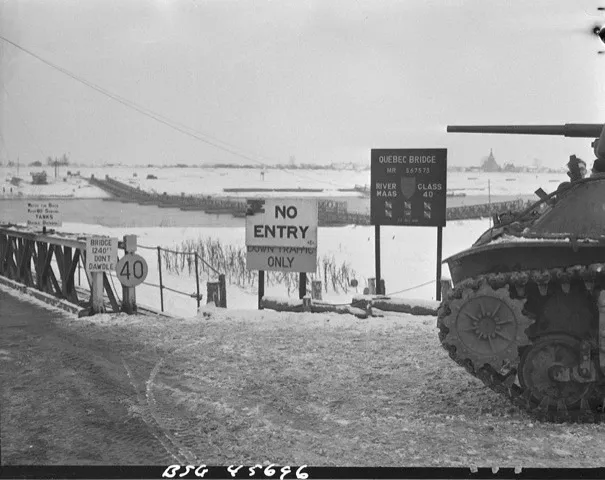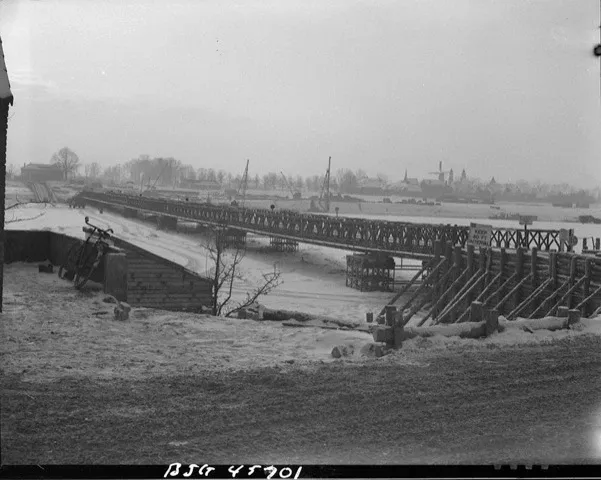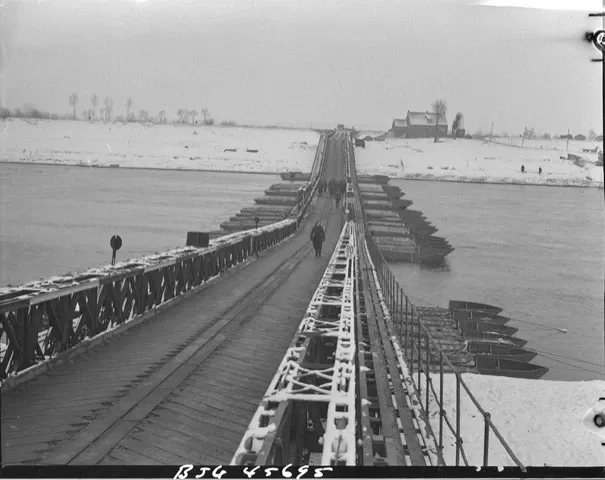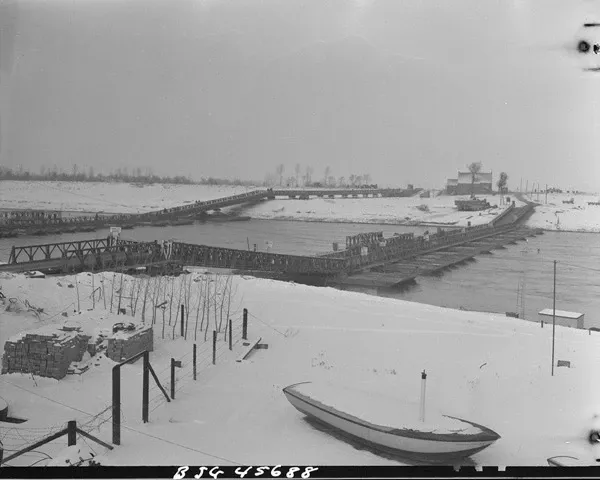Villa V1
Even along a quiet front line, safety could never be taken for granted. At Lith, the river Maas served as the frontline from its liberation in late September 1944 until May 1945. While there was no active fighting in the area, surveillance remained in the hands of small units.
Show all 5 photos
Even along a quiet front line, safety could never be taken for granted. At Lith, the river Maas served as the frontline from its liberation in late September 1944 until May 1945. While there was no active fighting in the area, surveillance remained in the hands of small units. In January 1945, it was the turn of the Canadian 5th Anti-Tank Regiment. Major B.E. Churchill's 3rd Battery had its headquarters in the village of Lith, and a section of the 14th Battery was also deployed there. Initially, it was quiet at the front, but then things went wrong.
On 14 January 1945 at 2.40 pm, a V1 came puttering in from the east. The flying bomb flew straight into the roof of the reformed church on the embankment, pulverising the church in the ensuing explosion. Debris flew around, destroying or damaging all the houses in the immediate vicinity. Roofs were torn off the houses, and windows shattered, causing injuries to numerous civilians and soldiers, mainly from flying glass.
Help…
Even along a quiet front line, safety could never be taken for granted. At Lith, the river Maas served as the frontline from its liberation in late September 1944 until May 1945. While there was no active fighting in the area, surveillance remained in the hands of small units. In January 1945, it was the turn of the Canadian 5th Anti-Tank Regiment. Major B.E. Churchill's 3rd Battery had its headquarters in the village of Lith, and a section of the 14th Battery was also deployed there. Initially, it was quiet at the front, but then things went wrong.
On 14 January 1945 at 2.40 pm, a V1 came puttering in from the east. The flying bomb flew straight into the roof of the reformed church on the embankment, pulverising the church in the ensuing explosion. Debris flew around, destroying or damaging all the houses in the immediate vicinity. Roofs were torn off the houses, and windows shattered, causing injuries to numerous civilians and soldiers, mainly from flying glass.
Help arrived promptly. Churchill's men were assisted by another battery, and a First Aid post was set up with ambulances arriving soon after. Within an hour, all the injured had been brought to safety. The lightly wounded were treated on the spot, while the seriously wounded civilians were taken to the hospital in Oss, and the military personnel to 's-Hertogenbosch. In total, 55 civilians and 15 Canadians were taken to hospitals.
For those who no longer had a home, emergency houses soon appeared. Lambertus Huismans, a school headmaster, organist, and director of the Boerenleen Bank, was one of those who lost his house in the attack. During the war, Huismans was mostly worried about others, especially his children. His daughter was active in the armed resistance in Lith, and his eldest son distributed illegal magazines. Huismans' makeshift house was marked with a sign 'Villa V1' by a nephew.
The headmaster continued his work after the war, but he never fully recovered his former self. The V1 tragedy had left him traumatised. After the war, a park named Huismanspark was created close to the new Protestant church and the homes for the elderly, to honour Master Huismans.
This is how to reach Villa V1
Starting point: from your location







